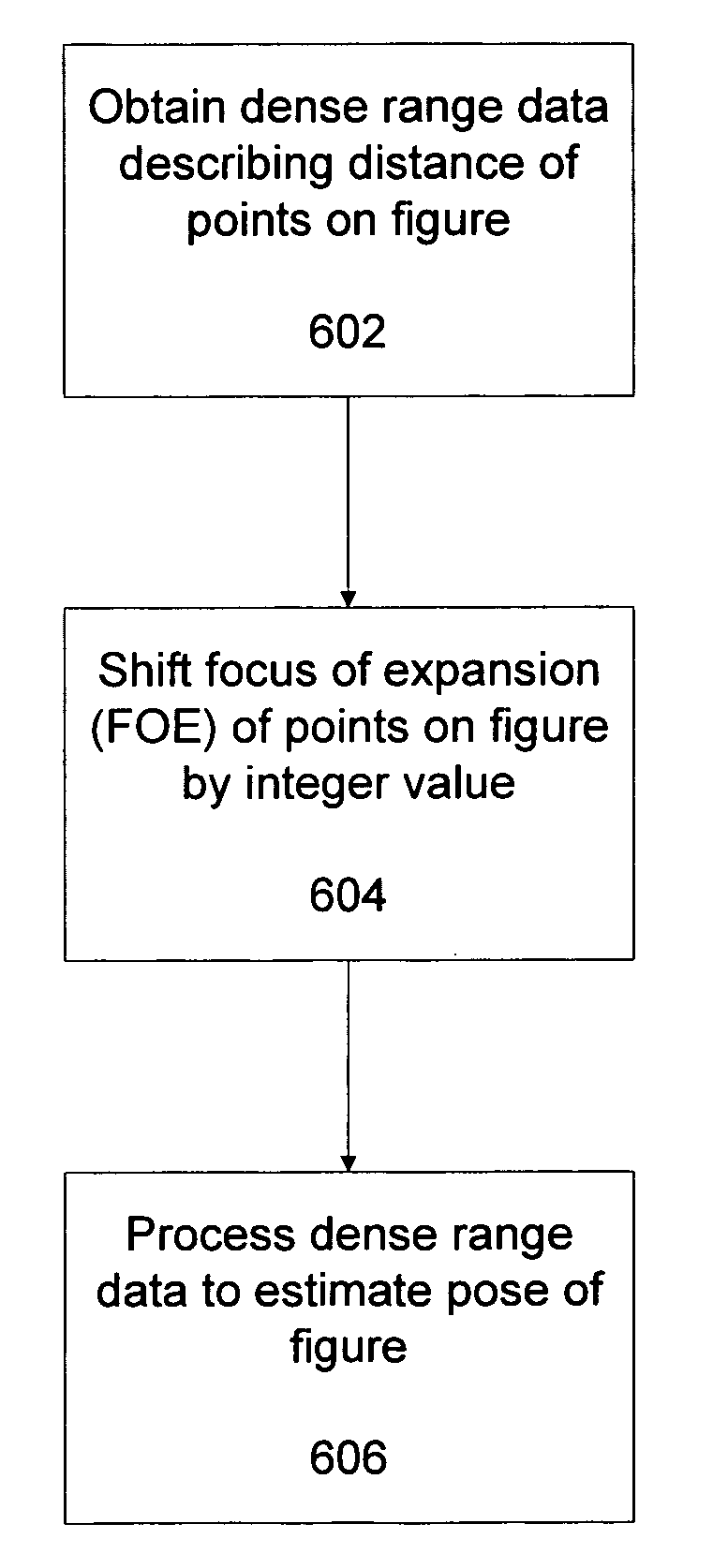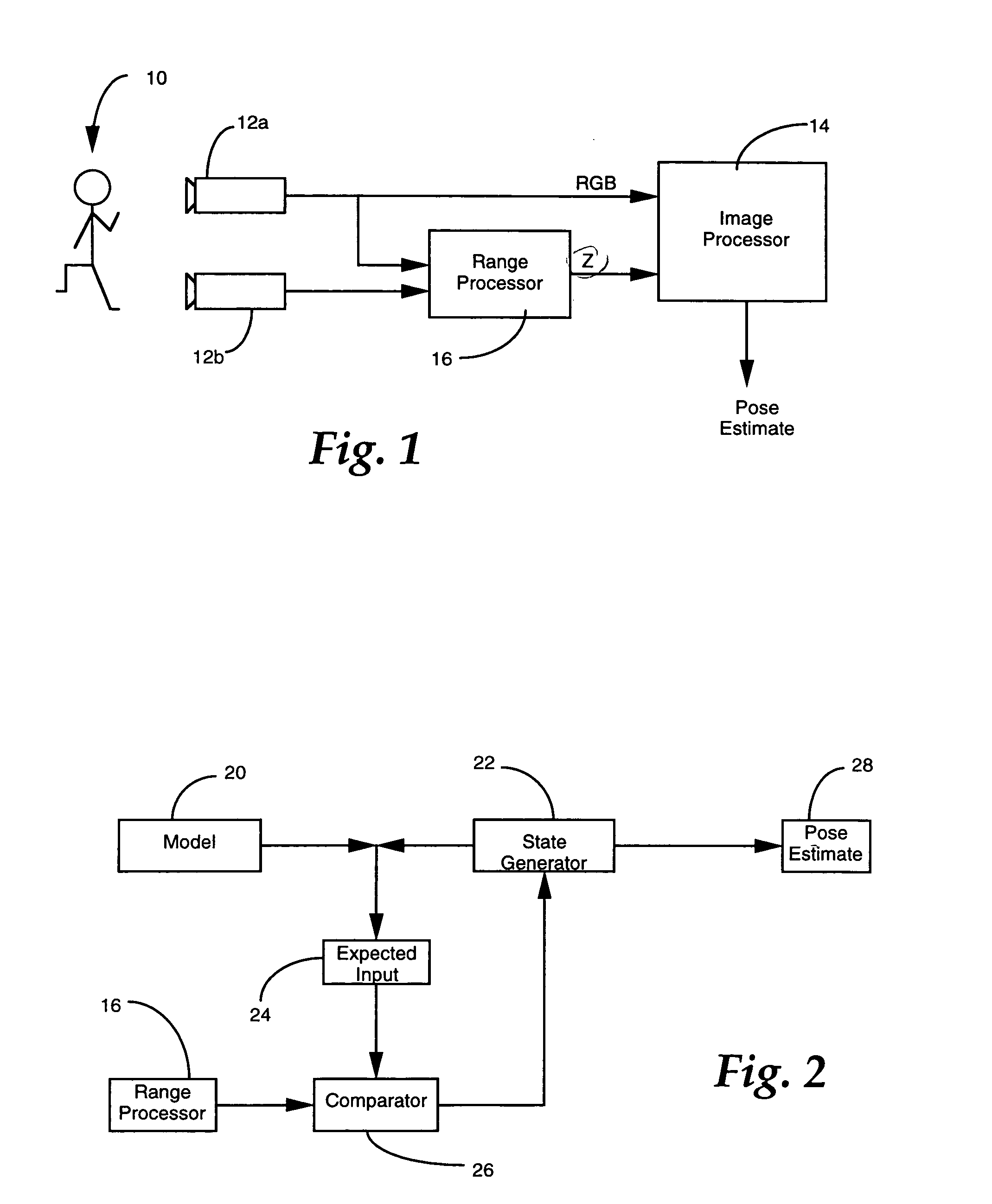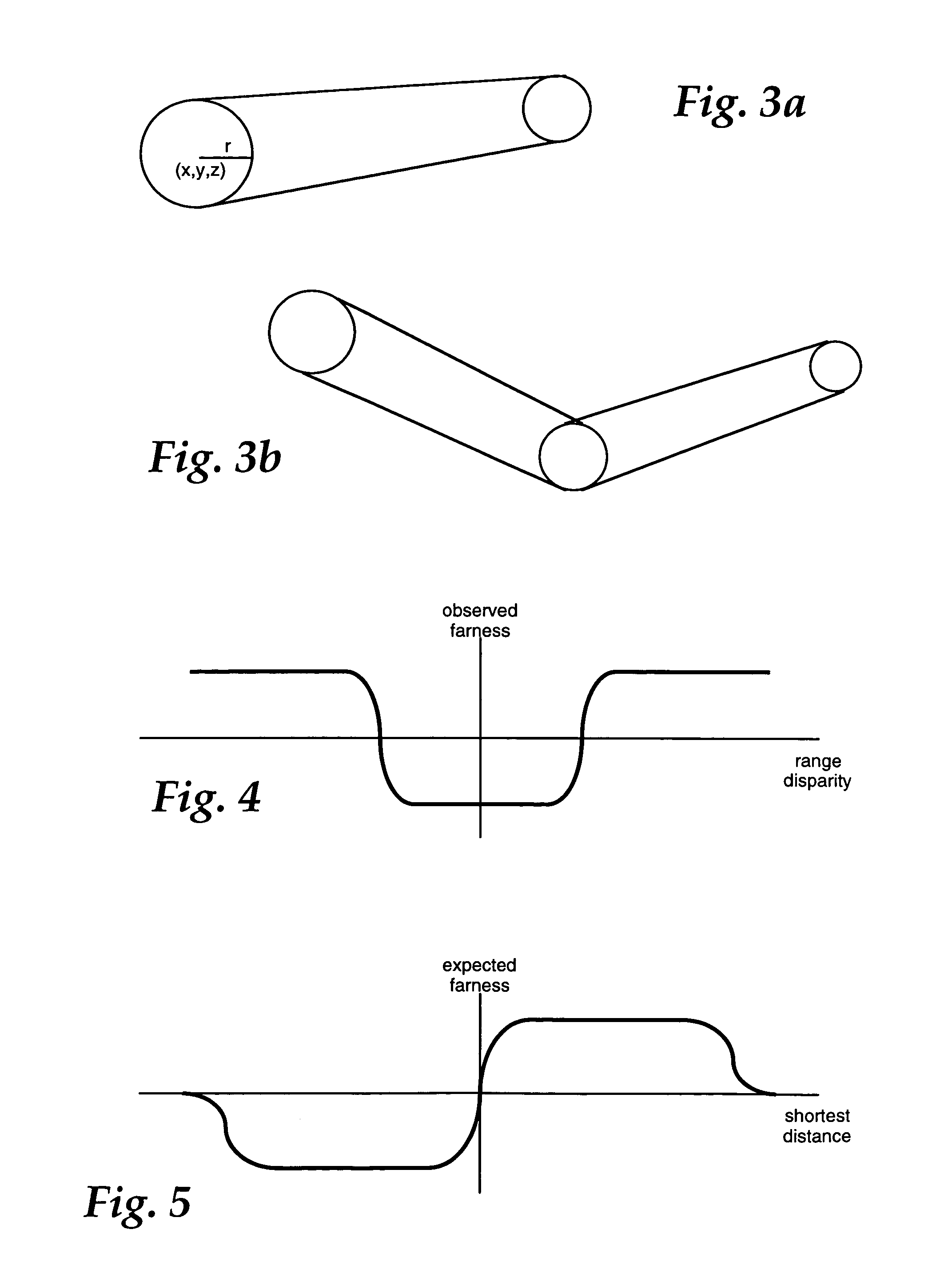Three dimensional object pose estimation which employs dense depth information
a three-dimensional object and depth information technology, applied in the field of computer vision, can solve the problems of limiting the accuracy and range of motion that can be captured, unable to estimate the rigid translation in depth of an unconnected object, and the tracking of articulated-body motion presents additional complexities within the general field of pose estimation, so as to improve the accuracy of pose tracking performance, accurate representation across time, and accurate estimation of object motion
- Summary
- Abstract
- Description
- Claims
- Application Information
AI Technical Summary
Benefits of technology
Problems solved by technology
Method used
Image
Examples
Embodiment Construction
[0014]To facilitate an understanding of the invention, it is described hereinafter with reference to its application in the context of estimating and tracking the pose of an articulated object, such as the human body, since this example presents a particularly interesting and useful application of the invention. It will be appreciated, however, that the practical utility of the invention is not limited to this particular situation. Rather, the invention can be employed with success in a variety of different situations, such as the estimation of the pose of singular rigid objects.
[0015]In the implementation of the invention, the pose of a figure is estimated by determining a reference, or initial pose, and then tracking changes over successive images to obtain an updated estimate of the pose. In the context of the following description, the term “pose” is employed in a generic sense, to indicate either or both of the position of the object within a three-dimensional space, and the or...
PUM
 Login to View More
Login to View More Abstract
Description
Claims
Application Information
 Login to View More
Login to View More - R&D
- Intellectual Property
- Life Sciences
- Materials
- Tech Scout
- Unparalleled Data Quality
- Higher Quality Content
- 60% Fewer Hallucinations
Browse by: Latest US Patents, China's latest patents, Technical Efficacy Thesaurus, Application Domain, Technology Topic, Popular Technical Reports.
© 2025 PatSnap. All rights reserved.Legal|Privacy policy|Modern Slavery Act Transparency Statement|Sitemap|About US| Contact US: help@patsnap.com



